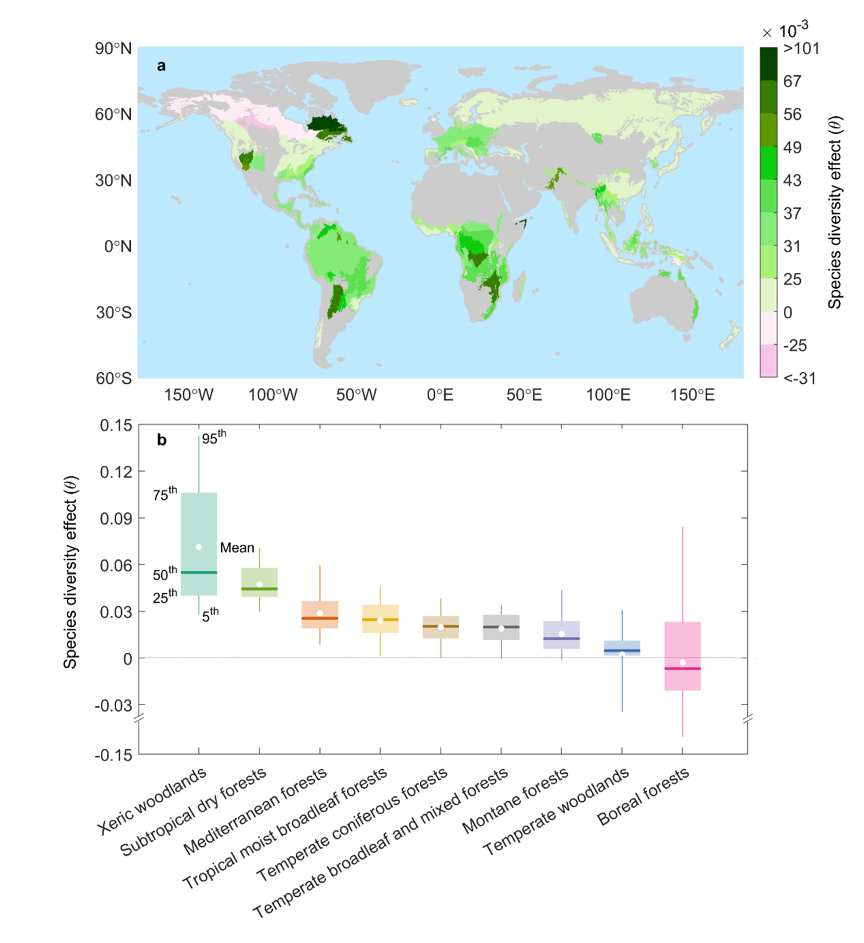Key point: Tree species diversity could enhance drought resistance in nearly half of global forests, according to an analysis of more than 700,000 forest plots published in Nature Geoscience. The finding has significant implications for current restoration and afforestation policies.
Extreme droughts can strongly reduce the growth-and even lead to the death-of forests. Tree species diversity can increase forest drought resistance. However, this effect has only been demonstrated for a small number of forest types. Whether species diversity could stabilize different types of forests around the world in extreme droughts, is currently unknown.
Using global satellite observations and species-richness data from over 700,000 forest plots, Tao Wang and his colleagues, researchers from the Institute of Tibetan Plateau Research, Chinese Academy of Sciences, estimated the effect of tree species diversity on the drought response of forests at the global scale. Drought resistance was found to be highest in species-rich forests, such as moist tropical broadleaf forests, where the average number of tree species was 65, and was lowest in species-poor forests, such as xeric woodlands (two or three tree species). The authors mapped the global species diversity effect on forest drought resistance, and predicted that higher species richness has a positive effect on drought resistance in nearly half of global forests, with the largest effect in dry and drought-prone forests, such as xeric woodlands or subtropical dry forests. The team also estimates that converting current forest plantations from monocultures to a mixture of four species could increase drought resistance of global plantation forests by 3.2%, with the largest increment found in dry forests.
The authors conclude that these findings emphasize the importance of restoring tree species diversity in helping forests resist frequent and intense droughts that may occur as a result of global warming. Restoring species diversity and multi-species planting should be included in forest policy, especially for dry forests.
This study, titled "Drought resistance enhanced by tree species diversity in global forests", was published online in Nature Geoscience on September 19. Dan Liu, the assistant researcher at the Institute of Tibetan Plateau Research, Chinese Academy of Sciences, is the first author, and Tao Wang is the corresponding author. This research was funded by the National Natural Science Foundation of China.

Figure 1. Species diversity effect on drought resistance across global forest ecoregions.


